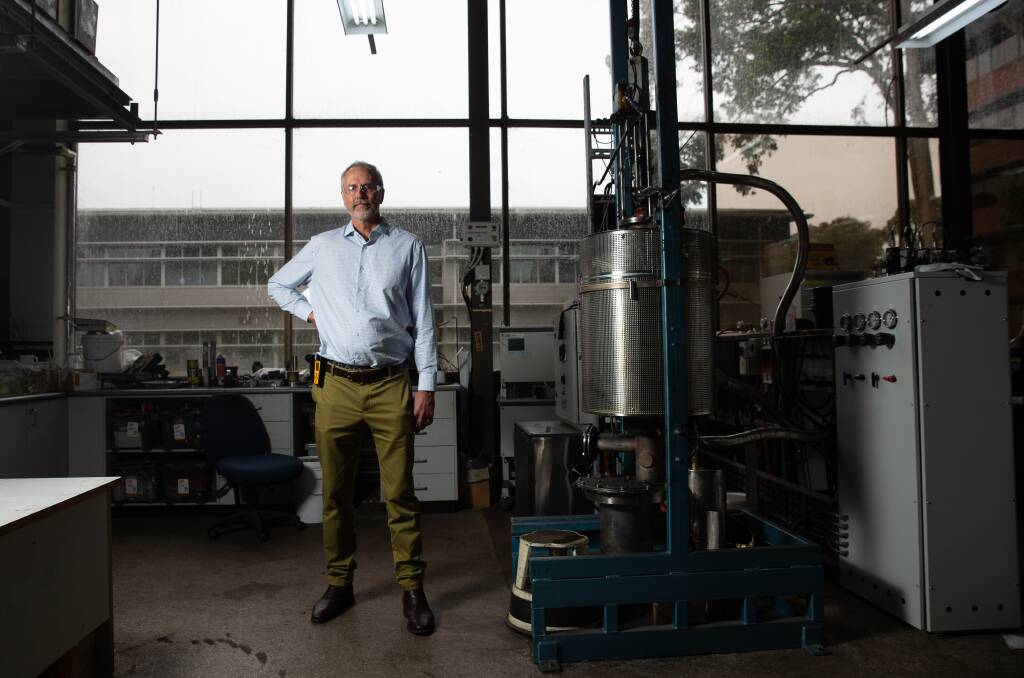
BHP has given $10 million to the University of Newcastle for research into "decarbonising steelmaking", amid a global push to cut emissions in the dirty but vital steel industry.
The research will focus on "low-carbon iron and steelmaking" using BHP's iron ore and coking coal.
This includes traditional blast-furnace ironmaking, along with hydrogen and emerging technologies.
Associate Professor Tom Honeyands, director of the Centre for Ironmaking Materials Research, said the funding would run for five years and extend BHP's relationship with the centre - running now for more than a decade.
The funding, which comes from BHP's US$400 million Climate Investment Program, doubles the budget of the resource giant's previous contributions to the centre.
The money will help train the next generation of PhD researchers and engineers, as well as advancing the path to low-carbon steel.
Steelmaking accounts for 7 to 10 per cent of global greenhouse gas emissions, according to Rod Dukino, BHP sales and marketing vice president for iron ore.
The steel industry remains one of the most difficult sectors in which to cut emissions. Yet demand for the alloy is rising, as construction expands with the world population.
"Research and innovation have a critical role to play in accelerating the industry's transition to a low-carbon future. The expanded research program with the University of Newcastle complements BHP's existing partnerships with our key steelmaking customers in China, Japan and South Korea," Dr Dukino said.
He said BHP is pursuing the long-term goal of "net zero scope three greenhouse gas emissions by 2050".
Scope three emissions refer to an organisation's "upstream and downstream" activities. Such emissions are part of an organisation's so-called "value chain".
"We are continuing to partner with customers and others in the steel value chain to seek to accelerate the transition to carbon neutral steelmaking."
BHP has stated that it aims to "take a product stewardship role for emissions across our value chain and commit to work with shippers, processors and users of our products to reduce scope three emissions".
The "green steel" concept in its purest form involves using clean hydrogen instead of coal in the steelmaking process. But green steel is in its early days and coking coal - which is used to make steel - is expected to remain in use for years. And steel production is expected to continue to rise in the decades ahead.
"We need to find ways to make greener steel," Associate Professor Honeyands said.
He said green steel would be "very important" in efforts to tackle climate change.
Last August, three Swedish enterprises delivered the first steel manufactured without the use of coking coal in history, following years of research and collaboration.
Until recently, steel production without coking coal was not considered an option. The Swedish consortium produced green steel with fossil-free hydrogen.
"There will be a time, soon, when we can make not just steel but all the metals we need without using coal," Professor Veena Sahajwalla, director of the University of NSW's Centre for Sustainable Materials Research and Technology, told the SMH.
Using Professor Sahajwalla's technology, Waratah-based steel maker Molycop is working on replacing coking coal with discarded rubber from old tyres and conveyor belts in its bid to commercialise green steel production.
BHP has forecast that new processes will displace coking coal, but it expects traditional blast furnaces to still be producing the vast majority of steel by 2050.
Mining magnate Andrew "Twiggy" Forrest disagrees, having said last September that: "I don't think there will be a coal-fired blast furnace in operation by 2050. Period."
The university's ironmaking research centre is part of the Newcastle Institute for Energy and Resources (NIER).
University of Newcastle Vice-Chancellor Professor Alex Zelinsky said the ongoing work of NIER would help drive the innovation needed for the world to decarbonise.
"With sustainability as a core focus, we are deeply committed to supporting research and innovation aimed at lowering our global carbon footprint," Professor Zelinsky said.
"This continued partnership with BHP is a clear example of the university's commitment to driving technological advancement through industry-engaged research."
Associate Professor Honeyands said there were a number of processes that could be used to decarbonise steel.
"To start with, we're looking at how best to optimise existing processes. Things like putting hydrogen into the blast furnace. There's a company in Germany - Thyssenkrupp Steel - that just started to do this.
"Bluescope say they'll do it as well. We're trying to work out how that will work in practice. How much can you add and how will it affect the iron ores you put into it? Would you need different iron ores, different coking coal?
"The blast furnace still needs coking coal to operate. You can reduce it by adding hydrogen, but you can't completely replace it."
A lot of scrap steel is recycled globally, but not enough to prevent the need to manufacture more.
"In China, everything is still new. They've only just built the bridges, railway lines, buildings and things. There isn't enough scrap to make all the steel they need. They do need Australian iron ore to do that," he said.







